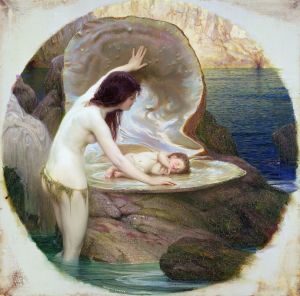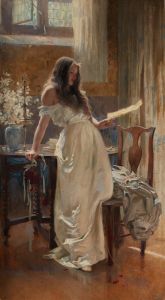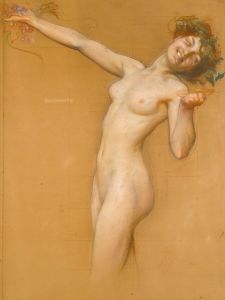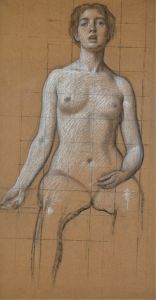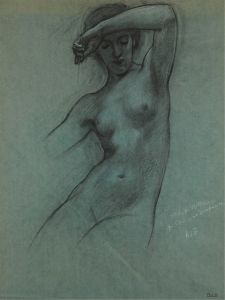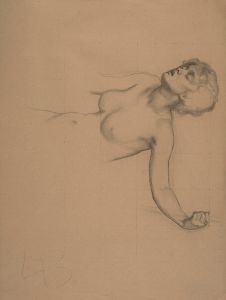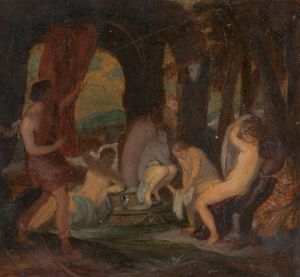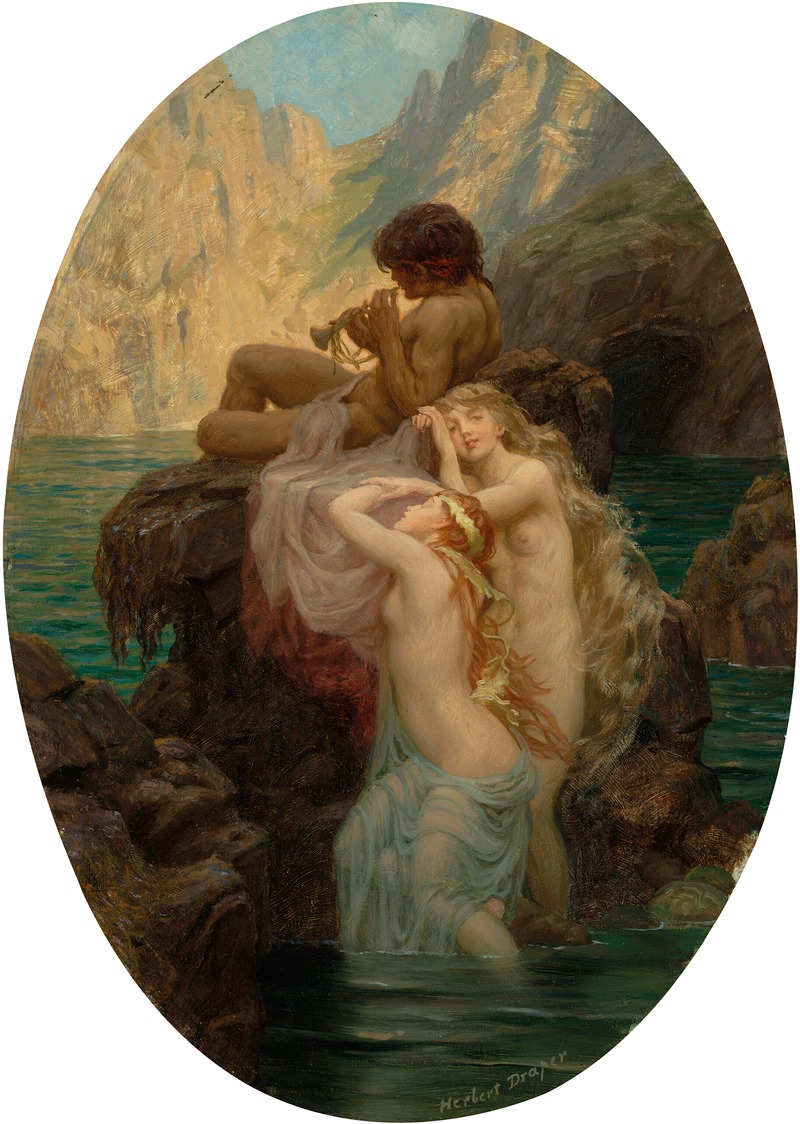
Sea Melodies
A hand-painted replica of Herbert James Draper’s masterpiece Sea Melodies, meticulously crafted by professional artists to capture the true essence of the original. Each piece is created with museum-quality canvas and rare mineral pigments, carefully painted by experienced artists with delicate brushstrokes and rich, layered colors to perfectly recreate the texture of the original artwork. Unlike machine-printed reproductions, this hand-painted version brings the painting to life, infused with the artist’s emotions and skill in every stroke. Whether for personal collection or home decoration, it instantly elevates the artistic atmosphere of any space.
Herbert James Draper (1863–1920) was a British painter associated with the late Victorian and Edwardian periods, known for his mythological and allegorical works. One of his notable paintings, Sea Melodies, exemplifies his fascination with classical themes and his skill in depicting the human form, particularly female figures, in romanticized settings.
Sea Melodies was created in 1910 and reflects Draper's characteristic style of blending mythological inspiration with a focus on naturalistic detail. The painting features a central female figure, often interpreted as a sea nymph or siren, seated on a rocky outcrop by the sea. She is depicted playing a lyre, an instrument frequently associated with ancient Greek mythology and the arts. The figure’s flowing garments and the dynamic composition of the scene evoke a sense of movement and harmony, aligning with the painting's title. The surrounding environment, including the waves and rocky coastline, is rendered with meticulous attention to detail, showcasing Draper's ability to combine human figures with natural landscapes.
Draper’s work during this period often drew upon themes from classical mythology, and Sea Melodies is no exception. The painting may be interpreted as an homage to the mythological idea of music and the sea being intertwined, with the siren or nymph symbolizing the enchanting and sometimes dangerous allure of the ocean. However, Draper’s focus remains on the aesthetic and emotional resonance of the scene rather than a specific narrative.
The painting was exhibited at the Royal Academy in London in 1910, where Draper regularly showcased his works. It was well-received for its technical excellence and the evocative quality of its subject matter. Draper’s ability to capture the interplay of light, texture, and emotion in his paintings contributed to his reputation as one of the leading artists of his time, although his popularity waned in the years following his death as tastes in art shifted.
Today, Sea Melodies is recognized as a fine example of Draper’s oeuvre and the broader tradition of late 19th and early 20th-century British academic painting. The painting is held in a private collection, and its details are primarily known through exhibition records and reproductions. Draper’s work, including Sea Melodies, continues to be appreciated for its technical mastery and its romanticized portrayal of mythological themes.







